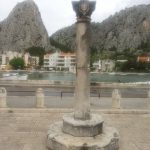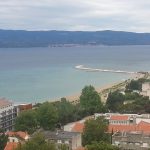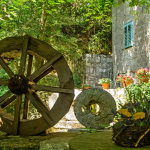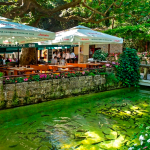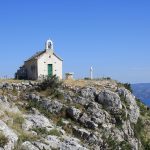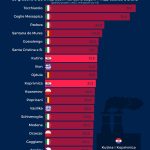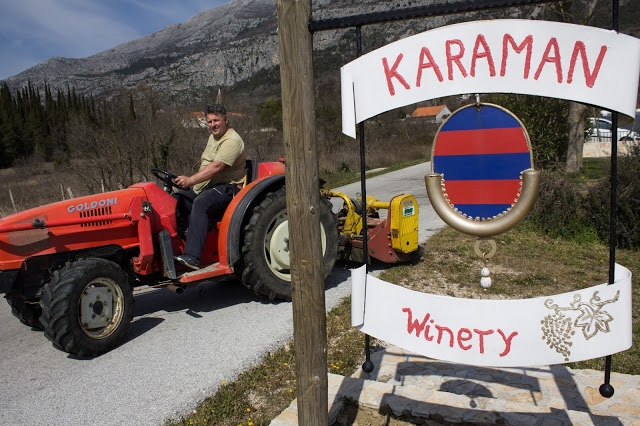
“The first seedlings were made by professor Kozina and me in Zagreb, there were 35 vines we chose as first grade. I sent them to my father in Pridvorje and he planted them. Then we waited for two and a half years so we can reproduce them. Those grafts are the origin of 95% of vines in Konavle!”
Niko Karaman and his wife Anita, eternal enthusiasts who have been a couple since he was 17 and she was 14 (Niko is now 47, Anita 44), we can freely call people with a vision of Konavle as a Croatian Tuscany, where in the multitude of family farms the Dubrovnik Malvazija variety dominates. Naturally, they will also add that such vision “does not at all envision Konavle as Župa Dubrovačka or, God forbid, Makarska” (very touristic destinations).
“I am a supporter of sustainable development, preserved landscape, ancient architecture typical of this climate, meaning Konavle should be kept the way they are now. I see agriculture in Konavle as a group of small family oases with a maximum alliance with agrotourism. We don’t need hectares and hectares of vineyards and to have, just like in 1980s, an airplane from Opuzen come to spray the vines. In the spring of 1986, I remember it well, not one frog was heard in the field, as when they sprayed vines they sprayed the canals as well,” said Niko.
Their vision includes a multitude of “fine and lovely family agricultural stories, fine and small ambient wine cellars, not in any case gigantic wineries and architectural nonsense.” Of course, everyone has the right to dreams and fantasies, but Niko and Anita’s work on the restoration and return of Dubrovnik Malvazija to Konavle has earned them the right to be a bit louder in their expression.
When Niko, then still a student of the Faculty of Agronomics in Zagreb, after Konavle was liberated, came with his friends from the 163rd Croatian Army brigade to the Franciscan monastery in Pridvorje in November of 1992, he was convinced of the catastrophe he could only forebode from a distance based on unverified and unreliable information. The Franciscan monastery, always a symbol of Konavle, was completely burned.
“Then I said that from this place, where everything is burned and dark, revival must begin. At the time I had a vision of a rebuilt monastery surrounded by famous vineyards of Dubrovnik Malvazija! You see, there were always lovely and good vineyards alongside monasteries or castles, and I realised we have a chance with Malvazija. I pressed the Malvazija story onto all my friends. I explained to them why Konavle can become Tuscany and how the diversity of Konavle, seen in a different light if viewed from Pridvorje, Radojčić or Komaje, is our great advantage. Fine, I cannot say that my vision has completely come true nor that Konavle have become the Croatian Tuscany, but – in Konavle, where Malvazija was before the war a nearly extinct variety, there are now 65.000 vines, 95% of them restored and planted with vine grafts from my vineyard,” boasted Niko.
And, of course, Niko can brag that grace to their effort the Dubrovnik Malvazija has become, along with Pošip, Grk and Plavac Mali, one of the wine brands of the south of Croatia.
And it all began, he recalls, with a decision to select as his high school the newly created Agricultural School in Dubrovnik. He was talked into it by his professor Marko Anđelinić, who was friends with Niko’s father and who always said it would be good for someone from Konavle to attend that school and then the Agronomics Faculty in Zagreb, as – someone needs to save Dubrovnik Malvazija from complete eradication.
“The Agriculture High School in Dubrovnik was a complete surprise when it was founded, as then no one spoke of the need to focus Konavle on family agriculture. However, part of that school was Marko Anđelinić, a professor who knew every corner of Konavle and who was the first in the 1970s to discover on some overgrown vineyard 2-3 vines he did not recognise, but with great potential. It was a time when there was no sophisticated equipment to detect DNA, and from the “Dalmatian Ampelography,” a capital work by Stjepan Bulić, he could only gather that they do not look like Dubrovnik Malvazija. That was his assumption, everything pointed to that, but he was not certain.”
Going off to college in Zagreb, where he was an excellent student, Niko made friends with then assistant professors, today’s heads of departments of Agronomics, professors Ivan Pejić, Edi Maletić and Bernard Kozina, while great support in realising his fantasies about Dubrovnik Malvazija came from legendary professor Nikola Mirošević.
“I came to college immediately after the war began, following news of the destruction of my Konavle from Zagreb. My entire family left Konavle for Dubrovnik, with all our agricultural fields destroyed. What pushed me most into realising my vision was the knowledge that all, literally all the vineyards in Konavle were destroyed, as there was no one in the beginning of 1992 to prune them and they failed completely. This only made me bolder in the desire to turn the Malvazija story into a true story of return. In every sense! As a student when I came back to Konavle, I would walk the vineyards and send buds back to Zagreb to be grafted. They would send them back from Zagreb and we would plant them. When we had a surplus, we would give them out for free, just to spread the story. In Dubrovnik we gave out 3.000 seedlings one year with the intent for people to plant them in the gardens, as we found in archives that Dubrovnik Malvazija was always present in gardens along houses or summer homes in Rijeka Dubrovačka. And the first seedlings were made by professor Kozina and me in Zagreb, there were 35 vines we chose as first grade. I sent them to my father in Pridvorje and he planted them. Then we waited for two and a half years so we can reproduce them. Those grafts are the origin of 95% of vines in Konavle! Others took grafts from vines they had in their gardens, with help from Andro Crvik and others. But, we did most of the work, not just for ourselves but for all of Konavle…”
Niko’s family has a tradition in agriculture, mainly in production of table grapes, Cardinal variety for sale on the market, with a bit of red wine produced for themselves. Niko likes to say that as a family they grew up and were schooled on grapes.
For his wine story with Anita he likes to say it began purely through enthusiasm, as a student with an overdraft in his account.
“When they asked us how we would do all this, I said to everyone that I have some friends in Jastrebarsko, such as Željko Pavković, and in Pavina, Letina… I remember one meeting in Jastrebarsko when professor Bernard Kozina brought us to Željko Pavković, and we had no money for stakes, wire or anything, we were students. The professor presented us as students who would want to have a vineyard in Konavle, with seedlings planted, but no money for armouring. Željko said: “Is that the Malvazija, what Karaman did?” Kozina asked if we should sign a contract, and Željko answered: “Forget contracts, gentleman’s agreement! They will pay when they can.” They gave us material in the value of over 200.000 kuna, up front. Naturally, we repaid it all later.”
Upon returning to Konavle, Niko worked for a while at the Dubrovnik University and Anita as a religion teacher in primary school. After a while, when they saw how much effort is needed in the vineyard and tasting room talking to many guests, they concluded they “cannot sit on two chairs” and completely devoted themselves to their wine fairy tale.
With an almost fanatical approach they stirred up the entire State Archive in Dubrovnik, Ivo Veselić, Ivo Orešković, turkologist Vesna Mijović Perić, as well as Zoran Perović, who carefully studied old materials searching for even the slightest trace of Dubrovnik Malvazija. It was an arduous, but in the end a very good job as the archives offered over 60 documents to prove how important Dubrovnik Malvazija was in the economy of the Dubrovnik Republic. The oldest document in the Archives dates from ancient 1383, citing this famous wine is demanded by Bosnian King Tvrtko Kotromanić.
“And we found especially interesting a menu from 1792, precisely stating that a Dubrovnik duke, on the occasion of the appointment of the new archbishop organised a banquet in the Saint Jacob church in the Old Town. That menu stated exactly what was eaten and drunk. Among other things, after the Grande Cake and strawberries with flower milk, four bottles of Malvazija costing 1.2 perpers. This leads to the fact that Malvazija was served as a dessert sweet wine. Of course we tried to make such a sweet wine. But to start we made a dry wine. The story of a sweet Malvazija from the archives stayed in our minds, and even the older people in Konavle used to say “from some variety, it was sweet, lots of sugars, they would make five litres and drink it around Christmas or at a wedding.” When we finally made our sweet Malvazija and took it to a tasting at Vinistra, we received a large gold medal for that Prosecco. It was our great victory and it is not surprising several thousand Konavle residents came to greet us at the celebration outside the Franciscan monastery.”
How proud Niko and Anita are of the tradition of Konavle is seen in the main motive for the wine label being Konavle earrings, originally part of the Konavle folk dress during the times of the Dubrovnik Republic, while today their elegance made them a popular piece of jewellery for women around the world. Worn even by the famous Oprah Winfrey.

